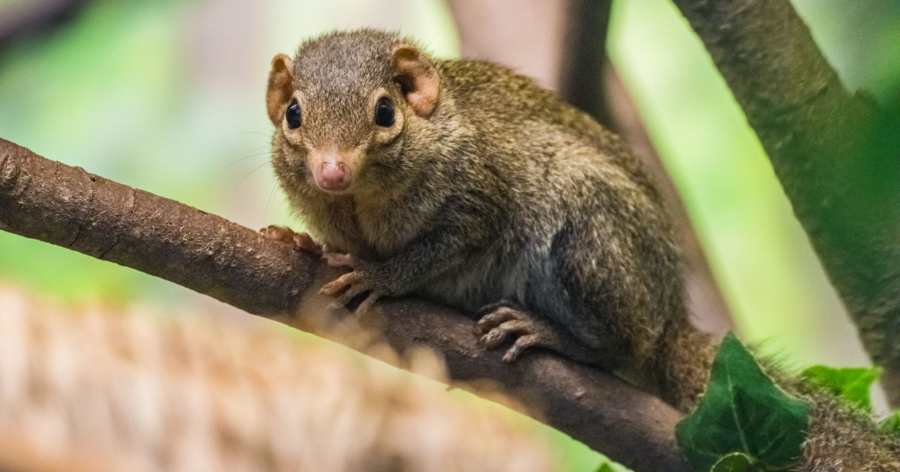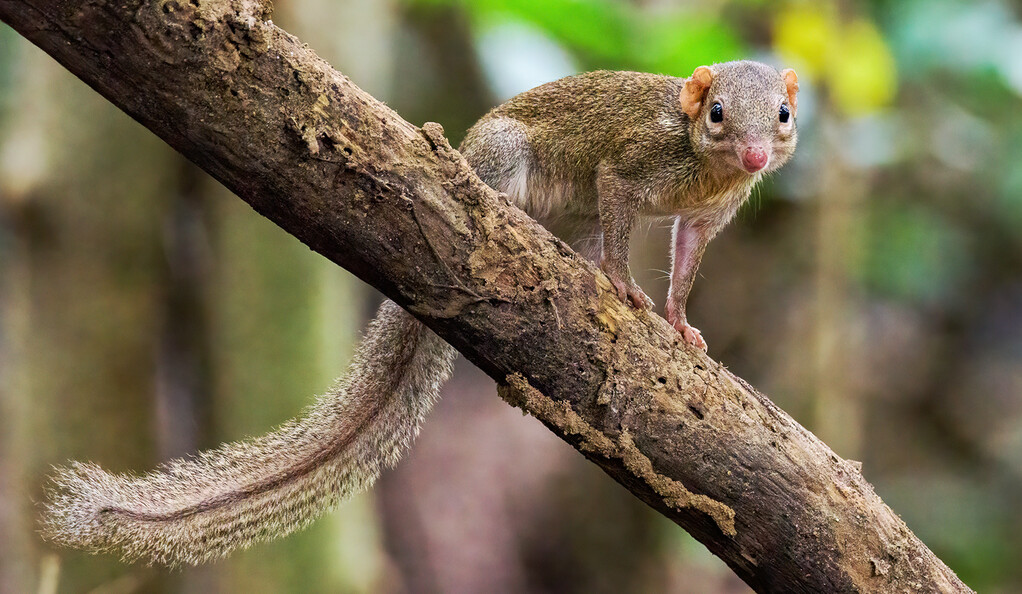No século XIX, o biólogo alemão Carl Bergmann estabeleceu que os organismos que vivem em latitudes maiores e mais frias, ou seja, mais perto de um dos dois polos da Terra, tendem a ser mais corpulentos do que os que se encontram mais próximos dos trópicos, para que consigam conservar mais calor.
Outra norma ecogeográfica bem estabelecida é o gigantismo insular, que dita que os animais que residem em ilhas são maiores do que os seus congéneres continentais.
Contudo, um pequeno mamífero arborícola nativo do sudeste asiático, o Tupaia belangeri, veio desafiar essas duas regras e lançar os cientistas num incessante estudo para compreender o que o torna único.
créditos: Yale Peabody Museum / Twitter
Analisando 839 espécimes de museu de T. belangeri adultos recolhidos ao longo dos últimos 130 anos, quer em regiões continentais, quer em ilhas, uma equipa de investigadores dos Estados Unidos e do Canadá descobriu que, contrariamente à regra de Bergmann, o tamanho desse animal era maior do que o esperado em territórios continentais mais quentes próximos do Equador.
Ainda assim, nas ilhas, essa norma mantém-se, e os Tupaia belangeri dessas áreas tendem a ter corpos maiores nas regiões mais frias, e menores nas zonas mais quentes.
Isso levou os cientistas a afirmarem que a regra do gigantismo insular não é totalmente cumprida com este mamífero arborícola semelhante a um esquilo, pois nas ilhas só é maior em latitudes mais elevadas.
Resumindo, os Tupaia belangeri continentais são maiores nas regiões mais quentes e mais pequenos nas mais frias, e os Tupaia belangeri das ilhas são maiores nas zonas mais frias e mais pequenos nas zonas mais quentes. Apesar de essas diferenças poderem estar relacionadas com adaptações das populações às condições ambientais e ecológicas locais, os cientistas ainda não sabem ao certo qual é o mecanismo por detrás dessas variações.
“O nosso estudo destaca que o tamanho do corpo está relacionado com factores ecológicos dinâmicos e potencialmente interdependentes”
Maya Juman, University of Cambridge e principal autora do artigo que revela a descoberta, aludindo à relação entre as duas regras que são colocadas em causa pelo Tupaia belangeri.
Os cientistas dizem que é preciso reavaliar as regras ecológicas estabelecidas noutros tempos e olhar para elas no contexto das actuais alterações climáticas, que estão a fazer subir a temperatura a nível global, sim, mas que afectam de forma diferente, as várias regiões do planeta.
Tupaia belangeri
The northern treeshrew (Tupaia belangeri) is a treeshrew species native to Southeast Asia.
Northern tree shrews inhabit a variety of forest habitats. They live in tropical and subtropical areas, which are usually moist environments (IUCN, 2012). They have also been recorded in shrub lands and artificial plantations and rural gardens. IUCN (2012) reports 3 000 meters as the highest known elevation for tree shrew, recorded in China.
Tree shrews inhabit areas about 25 degrees Celsius, with at least 45 to 50% humidity (Fuchs and Corbach-Sohle, 2009). (Fuchs and Corbach-Sohle, 2009; IUCN, 2012).
Most recently scientists are studying the difference of rules of body size established by the biologist Carl Bergmann.
The principle was proposed by Carl Bergmann, a 19th-century German biologist, to account for an adaptive mechanism to conserve or to radiate body heat, depending on climate.
Two of the most-studied ecogeographical rules describe patterns of body size variation within species. Bergmann’s rule predicts that individuals have larger body sizes in colder climates (typically at higher latitudes), and the island rule predicts that island populations of small-bodied species average larger in size than their mainland counterparts (insular gigantism). Read more here
Interesting post for students who are in Biology area.
Geração green
16.04.2023











